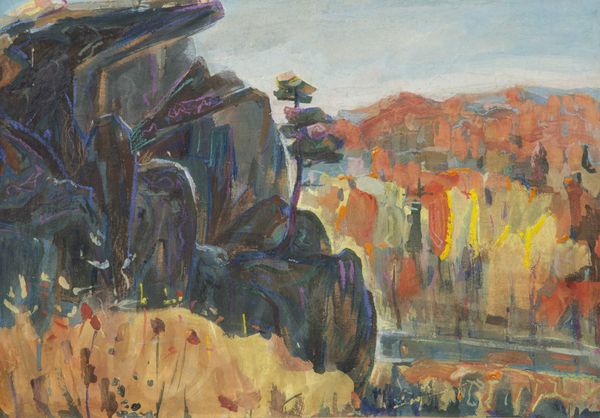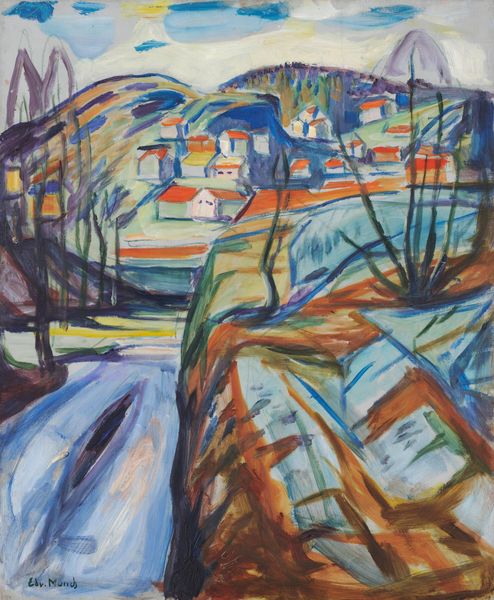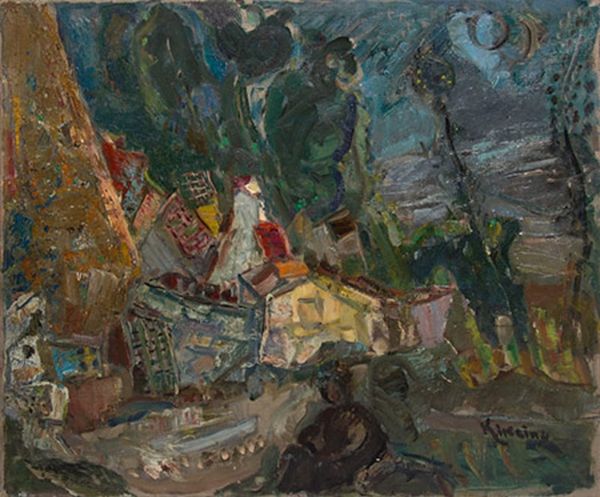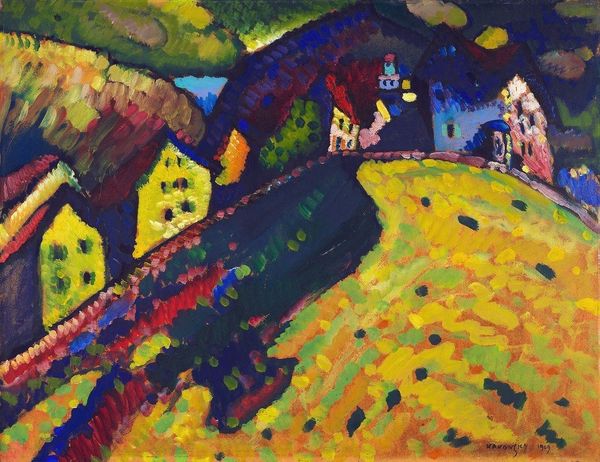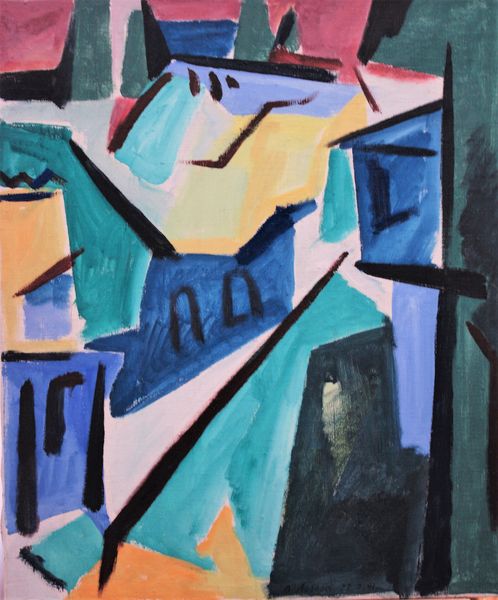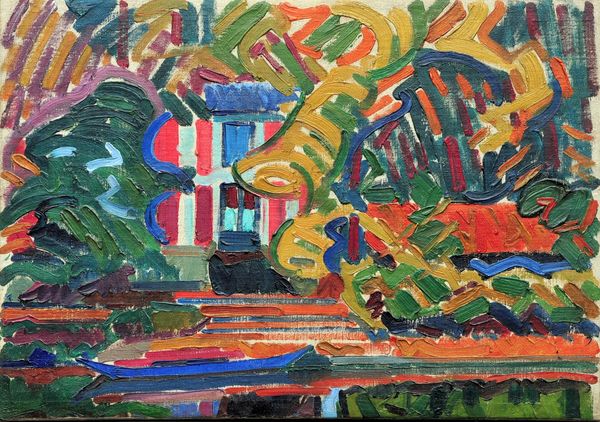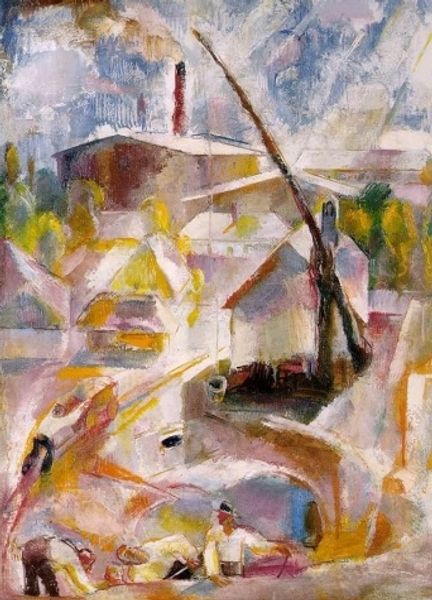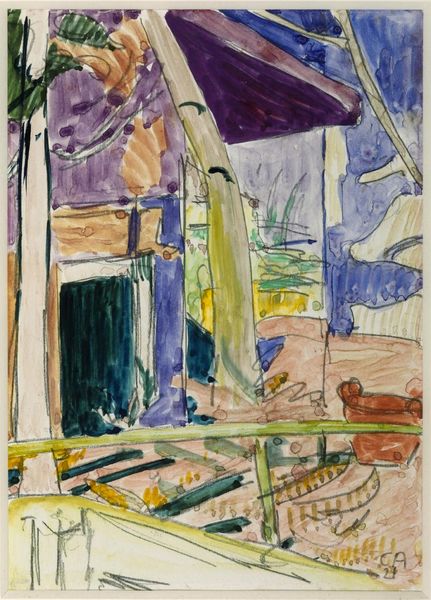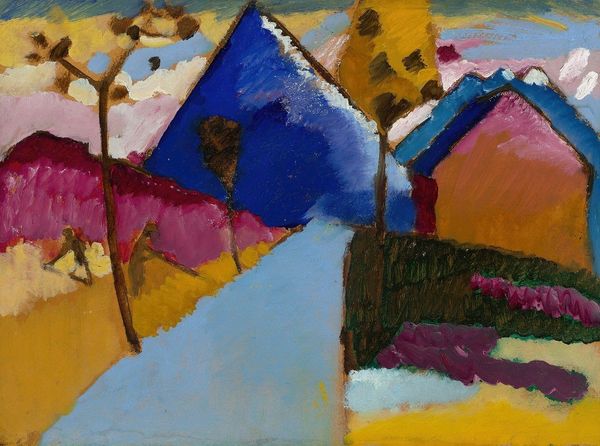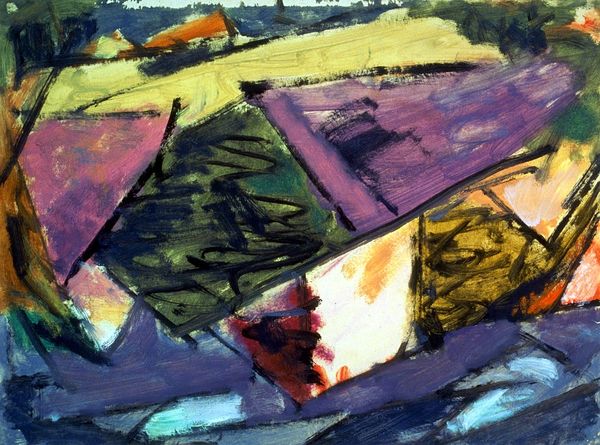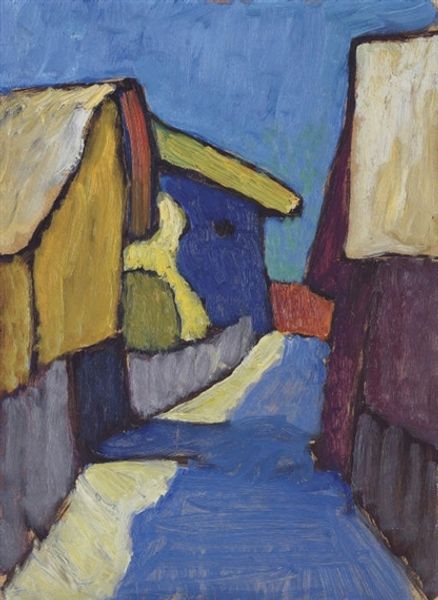
drawing, tempera, painting, watercolor, architecture
#
drawing
#
tempera
#
painting
#
landscape
#
watercolor
#
expressionism
#
watercolor
#
architecture
Copyright: Public Domain
Editor: So, this is Agnes Langenbeck-Zachariae's "Wildberg, factory," from 1923. It's a tempera and watercolor painting or drawing—it’s hard to tell! There's this interesting mix of vibrant colors and industrial forms, but it feels…melancholy, maybe? What do you see in this piece? Curator: I see a visual representation of a society in transition. Langenbeck-Zachariae situates the factory—a symbol of modernity and progress—within a landscape, evoking the tension between industrial advancement and the natural world. Editor: I hadn't thought of it that way. I was so focused on the colors! Curator: Exactly, and that’s where Expressionism comes into play. The exaggerated colors and simplified forms emphasize the emotional impact of this juxtaposition. What are your thoughts on how gender plays into this representation? Considering Langenbeck-Zachariae was a female artist during this time? Editor: Hmmm. I hadn’t thought about that either. Perhaps she offers a different perspective on industrialization? Maybe not celebrating it, but seeing its impact? Curator: Precisely! Female artists of this period often navigated their artistic expression through subtle critiques of the dominant patriarchal structures. The 'pastoral' landscape is now disrupted. The question we could explore further is, is the work necessarily critical? Perhaps there is a simultaneous attraction to modern progress alongside the more obviously mournful aspects? Editor: That's such an interesting idea! I was just seeing the surface, but it's clearly so much more layered. Curator: By understanding the social and historical context, and acknowledging the artist’s positionality, we can have more insightful dialogue. It helps us decode the complex messages embedded in these paintings. Editor: Thank you; I’ve learned so much just now by looking at this in terms of culture and historical change. Curator: Indeed. Art is in constant conversation with these social movements and broader cultural moments.
Comments
No comments
Be the first to comment and join the conversation on the ultimate creative platform.
